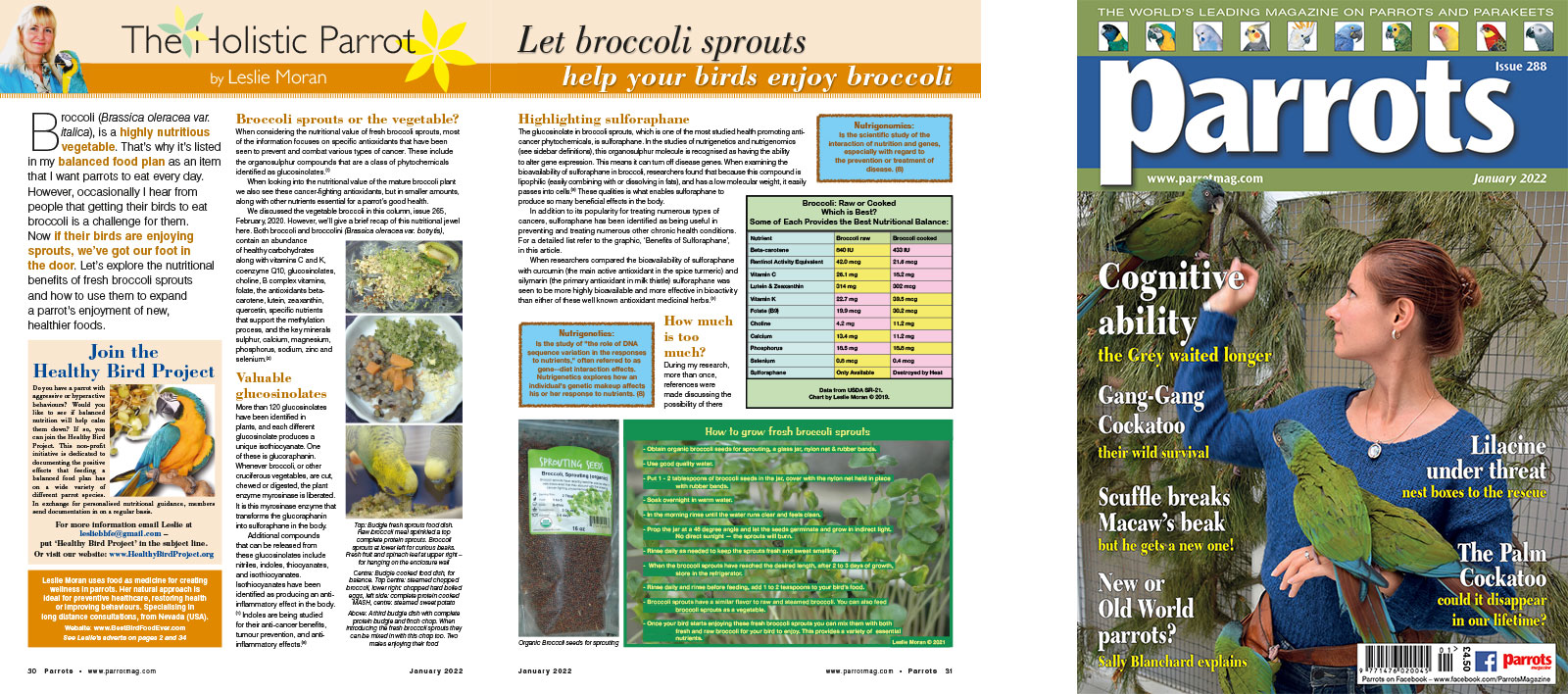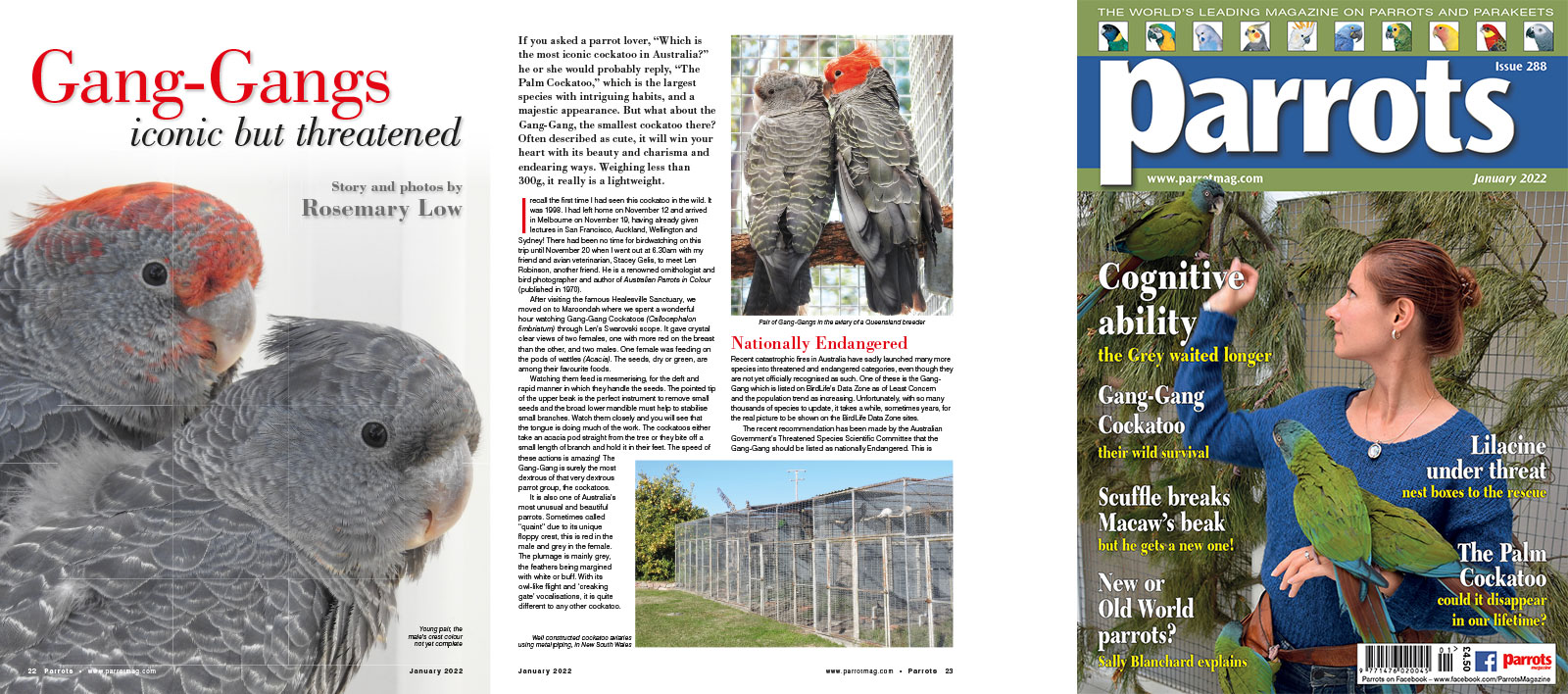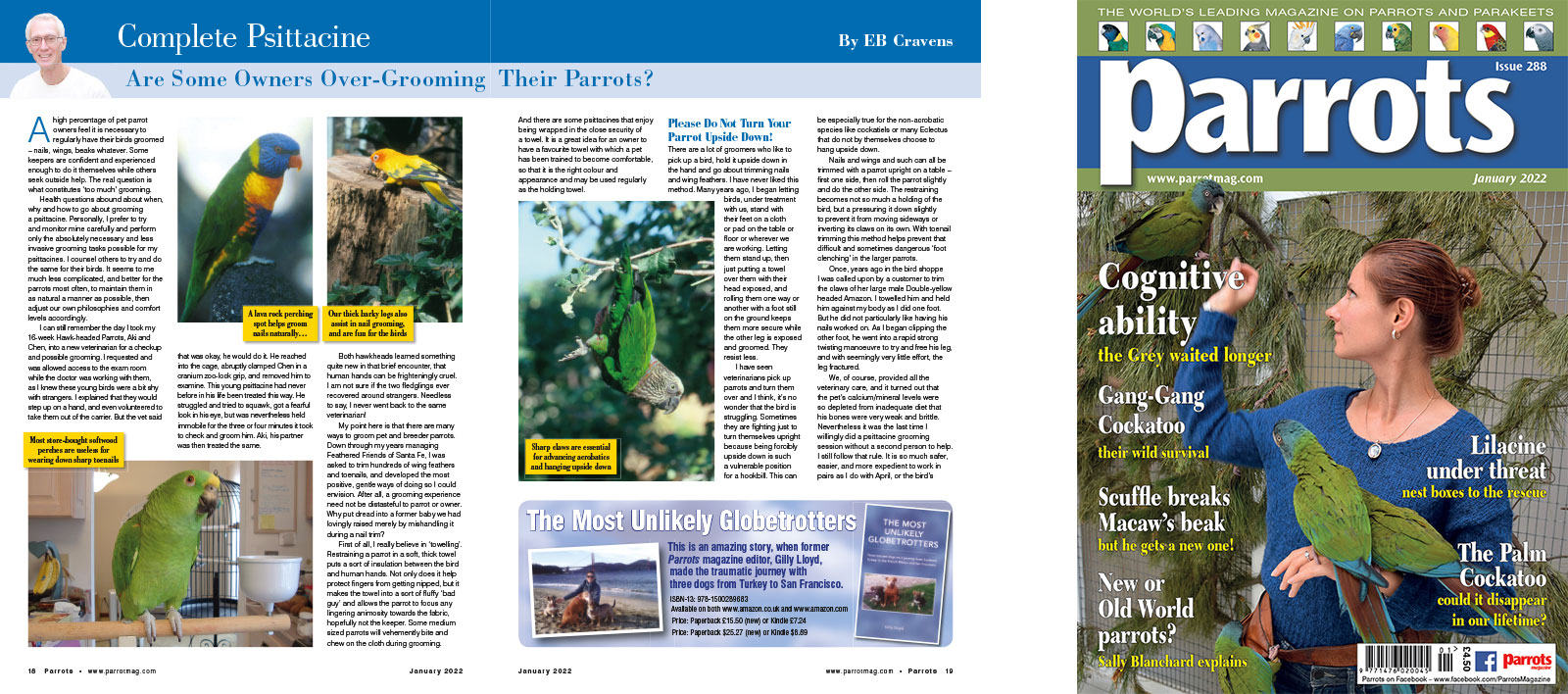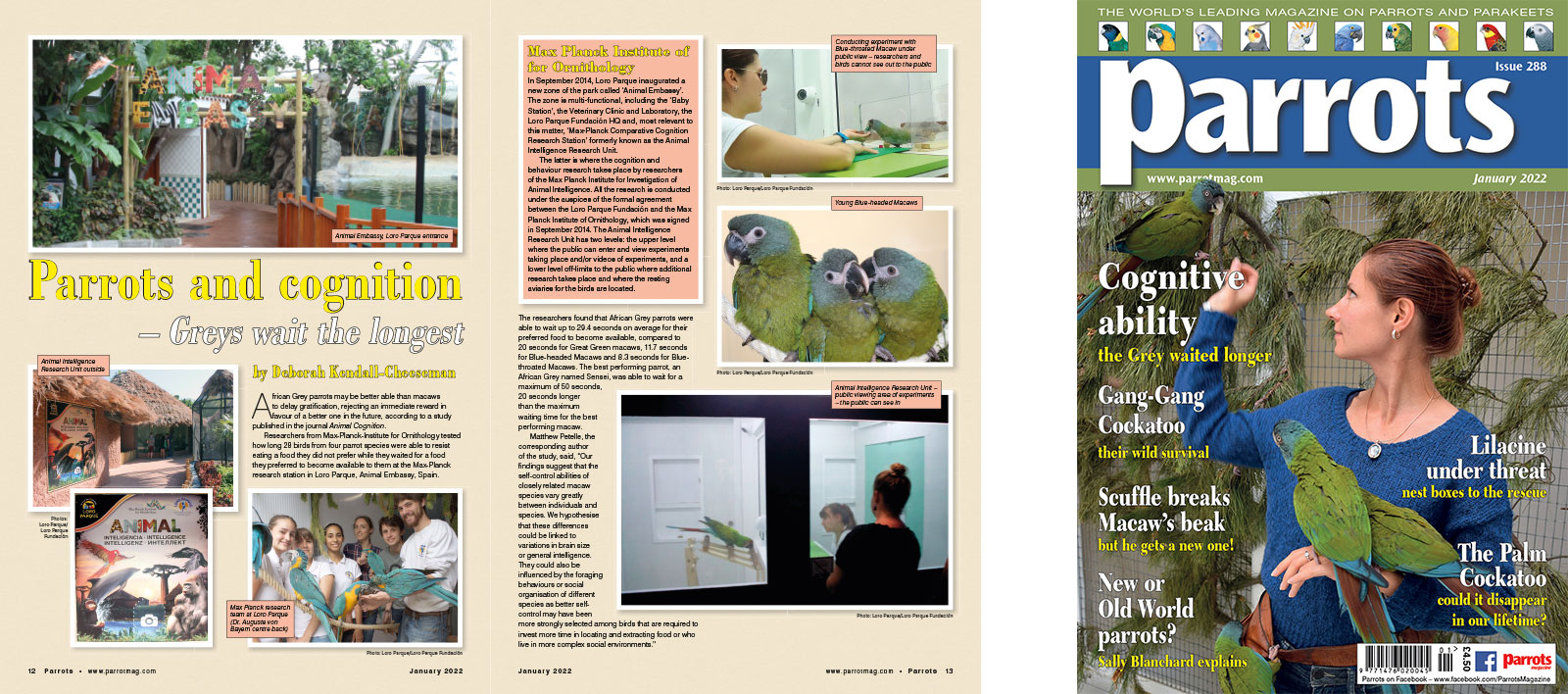
The Holistic Parrot by Leslie Moran
Broccoli (Brassica oleracea var. italica), is a highly nutritious vegetable. That’s why it’s listed in my balanced food plan as an item that I want parrots to eat every day. However, occasionally I hear from people that getting their birds to eat broccoli is a challenge for them. Now if their birds are enjoying sprouts, we’ve got our foot in the door. Let’s explore the nutritional benefits of fresh broccoli sprouts and how to use them to expand a parrot’s enjoyment of new, healthier foods.
When considering the nutritional value of fresh broccoli sprouts, most of the information focuses on specific antioxidants that have been seen to prevent and combat various types of cancer. These include the organosulphur compounds that are a class of phytochemicals identified as glucosinolates.
When looking into the nutritional value of the mature broccoli plant we also see these cancer-fighting antioxidants, but in smaller amounts, along with other nutrients essential for a parrot’s good health.
Buy Now!

Story and photos by Rosemary Low
If you asked a parrot lover, “Which is the most iconic cockatoo in Australia?” he or she would probably reply, “The Palm Cockatoo,” which is the largest species with intriguing habits, and a majestic appearance. But what about the Gang-Gang, the smallest cockatoo there? Often described as cute, it will win your heart with its beauty and charisma and endearing ways. Weighing less than 300g, it really is a lightweight.
I recall the first time I had seen this cockatoo in the wild. It was 1998. I had left home on November 12 and arrived in Melbourne on November 19, having already given lectures in San Francisco, Auckland, Wellington and Sydney! There had been no time for birdwatching on this trip until November 20 when I went out at 6.30am with my friend and avian veterinarian, Stacey Gelis, to meet Len Robinson, another friend. He is a renowned ornithologist and bird photographer and author of Australian Parrots in Colour (published in 1970).
After visiting the famous Healesville Sanctuary, we moved on to Maroondah where we spent a wonderful hour watching Gang-Gang Cockatoos (Callocephalon fimbriatum) through Len’s Swarovski scope. It gave crystal clear views of two females, one with more red on the breast than the other, and two males. One female was feeding on the pods of wattles (Acacia). The seeds, dry or green, are among their favourite foods.
Buy Now!

Complete Psittacine by Eb Cravens
A high percentage of pet parrot owners feel it is necessary to regularly have their birds groomed – nails, wings, beaks whatever. Some keepers are confident and experienced enough to do it themselves while others seek outside help. The real question is what constitutes ‘too much’ grooming.
Health questions abound about when, why and how to go about grooming a psittacine. Personally, I prefer to try and monitor mine carefully and perform only the absolutely necessary and less invasive grooming tasks possible for my psittacines. I counsel others to try and do the same for their birds. It seems to me much less complicated, and better for the parrots most often, to maintain them in as natural a manner as possible, then adjust our own philosophies and comfort levels accordingly.
I can still remember the day I took my 16-week Hawk-headed Parrots, Aki and Chen, into a new veterinarian for a checkup and possible grooming. I requested and was allowed access to the exam room while the doctor was working with them, as I knew these young birds were a bit shy with strangers. I explained that they would step up on a hand, and even volunteered to take them out of the carrier. But the vet said that was okay, he would do it. He reached into the cage, abruptly clamped Chen in a cranium zoo-lock grip, and removed him to examine. This young psittacine had never before in his life been treated this way. He struggled and tried to squawk, got a fearful look in his eye, but was nevertheless held immobile for the three or four minutes it took to check and groom him. Aki, his partner was then treated the same.
Buy Now!

By Deborah Kendall-Cheeseman
African Grey parrots may be better able than macaws to delay gratification, rejecting an immediate reward in favour of a better one in the future, according to a study published in the journal Animal Cognition.
Researchers from Max-Planck-Institute for Ornithology tested how long 28 birds from four parrot species were able to resist eating a food they did not prefer while they waited for a food they preferred to become available to them at the Max-Planck research station in Loro Parque, Animal Embassy, Spain.
The researchers found that African Grey parrots were able to wait up to 29.4 seconds on average for their preferred food to become available, compared to 20 seconds for Great Green macaws, 11.7 seconds for Blue-headed Macaws and 8.3 seconds for Blue-throated Macaws. The best performing parrot, an African Grey named Sensei, was able to wait for a maximum of 50 seconds, 20 seconds longer than the maximum waiting time for the best performing macaw.
Matthew Petelle, the corresponding author of the study, said, “Our findings suggest that the self-control abilities of closely related macaw species vary greatly between individuals and species. We hypothesise that these differences could be linked to variations in brain size or general intelligence. They could also be influenced by the foraging behaviours or social organisation of different species as better self-control may have been more strongly selected among birds that are required to invest more time in locating and extracting food or who live in more complex social environments.”
Buy Now!




